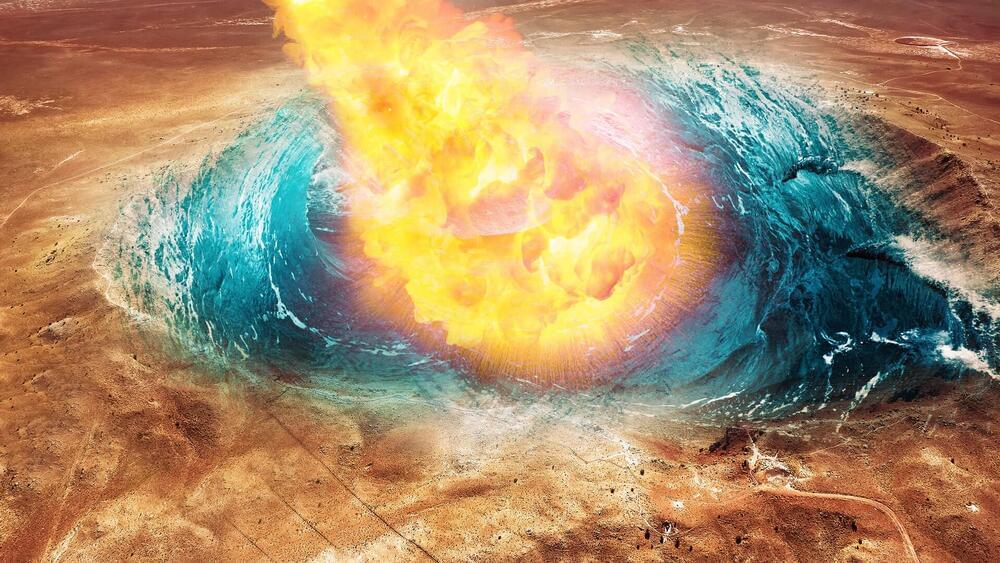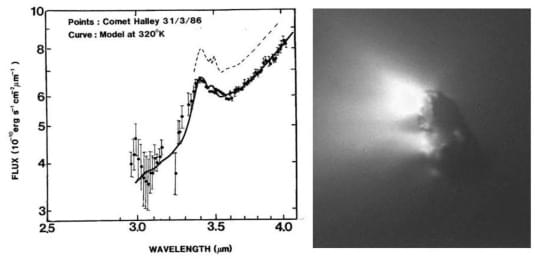De GARIS ESSAYS
Essay No.
Title : Answering Fermi’s Paradox.
Text URL : https://profhugodegaris.files.wordpress.com/2011/04/fermiparadox.pd.
All Essays URL : https://profhugodegaris.wordpress.com/essays/
De GARIS ESSAYS
Essay No.
Title : Answering Fermi’s Paradox.
Text URL : https://profhugodegaris.files.wordpress.com/2011/04/fermiparadox.pd.
All Essays URL : https://profhugodegaris.wordpress.com/essays/
You can buy Universe Sandbox 2 game here: http://amzn.to/2yJqwU6
Hello and welcome to What Da Math!
In this video, we will talk about alien life.
Links: http://www.qsl.net/pa2ohh/jsffield.htm.
http://www.seti.org.au/spacecom/setionabudget.html.
https://en.wikipedia.org/wiki/Link_budget.
https://en.wikipedia.org/wiki/List_of_interstellar_radio_messages.
http://www.spaceacademy.net.au/spacelink/spcomcalc.htm.
Support this channel on Patreon to help me make this a full time job:
https://www.patreon.com/whatdamath.
Space Engine is available for free here: http://spaceengine.org.
Enjoy and please subscribe.
Twitter: https://twitter.com/WhatDaMath.

Earth has been hit by an intense, unusual blast of light that could change our understanding of the universe, scientists have said.
Late last year, scientists spotted a 50-second-long blast of energy coming towards Earth, known as a gamma-ray burst or GRB, which are the most powerful explosions in the universe. Immediately, researchers started looking for the afterglow that such blasts leave behind, with that visible light being useful to find where the blast has come from.

Two possibilities exist: Either we are alone in the universe or we are not. Both are equally terrifying. ~Carl Sagan.
Looking up at a starry night sky makes one wonder if we are really alone. If you have never asked yourself this question, here’s some perspective on the vastness of our universe.
And this is just one galaxy.
IStock / Jasonfang.
On the best of conditions, you could, in theory, count around 5,000 stars with the naked eye. The image below shows the comparison between our galaxy (the Milky Way) and our sun. Our night sky (5,000) stars will just be another small dot in comparison with the Milky Way.

The event is likened to the Chicxulub collision on Earth.
A study has found that the megatsunami that swept Mars around 3.4 billion years ago was caused by an asteroid strike on one of its oceans. The event is compared to the likes of the Chicxulub collision—which is believed to have wiped out dinosaurs from the face of the earth about 66 million years ago.
Researchers, led by Alexis Rodriguez of the Planetary Science Institute in Arizona, have also suggested that NASA’s Viking 1 Lander, which was deployed on a mission to find evidence of life on Mars in 1976, could have landed near the crater of this megatsunami.
Michalz86/iStock shannonstent/iStock Dominic Jeanmaire/iStock.
The new study published in the journal Scientific Reports analyzed “maps of Mars’ surface, created by combining images from previous missions to the planet, and identified an impact crater that could have caused the megatsunami,” as mentioned in the press release.

We review the salient evidence consistent with or predicted by the Hoyle-Wickramasinghe (H-W) thesis of Cometary (Cosmic) Biology. Much of this physical and biological evidence is multifactorial. One particular focus are the recent studies which date the emergence of the complex retroviruses of vertebrate lines at or just before the Cambrian Explosion of ∼500 Ma. Such viruses are known to be plausibly associated with major evolutionary genomic processes. We believe this coincidence is not fortuitous but is consistent with a key prediction of H-W theory whereby major extinction-diversification evolutionary boundaries coincide with virus-bearing cometary-bolide bombardment events. A second focus is the remarkable evolution of intelligent complexity (Cephalopods) culminating in the emergence of the Octopus. A third focus concerns the micro-organism fossil evidence contained within meteorites as well as the detection in the upper atmosphere of apparent incoming life-bearing particles from space. In our view the totality of the multifactorial data and critical analyses assembled by Fred Hoyle, Chandra Wickramasinghe and their many colleagues since the 1960s leads to a very plausible conclusion – life may have been seeded here on Earth by life-bearing comets as soon as conditions on Earth allowed it to flourish (about or just before 4.1 Billion years ago); and living organisms such as space-resistant and space-hardy bacteria, viruses, more complex eukaryotic cells, fertilised ova and seeds have been continuously delivered ever since to Earth so being one important driver of further terrestrial evolution which has resulted in considerable genetic diversity and which has led to the emergence of mankind.
Another look at the Fermi Paradox, and the implication on us as a civilization. Get a razor that will last you a lifetime from Henson Shaving here: https://bit.ly/2YS4SPN To get the 100 pk of blades for free, make sure to add it to your shopping cart, and use the code ASTRUM.
Astrum merch now available!
Apparel: https://teespring.com/stores/astrum-space.
Metal Posters: https://displate.com/promo/astrum?art=5f04759ac338b.
SUBSCRIBE for more videos about our other planets.
Subscribe! http://goo.gl/WX4iMN
Facebook! http://goo.gl/uaOlWW
Twitter! http://goo.gl/VCfejs.
Instagram! https://www.instagram.com/astrumspace/
TikTok! https://www.tiktok.com/@astrumspace.
Astrum Spanish: https://bit.ly/2KmkssR
Astrum Portuguese: https://www.youtube.com/channel/UChn_-OwvV63mr1yeUGvH-BQ
Donate!
Patreon: http://goo.gl/GGA5xT
Ethereum Wallet: 0x5F8cf793962ae8Df4Cba017E7A6159a104744038
Become a Patron today and support my channel! Donate link above. I can’t do it without you. Thanks to those who have supported so far!
Vitaly Vanchurin, physicist and cosmologist at the University of Minnesota Duluth speaks to Luis Razo Bravo of EISM about the world as a neural network, machine learning, theories of everything, interpretations of quantum mechanics and long-term human survival.
Timestamp of the conversation:
00:00 — Opening quote by Vanchurin.
00:53 — Introduction to Vanchurin.
03:17 — Vanchurin’s thoughts about human extinction.
05:56 — Brief background on Vanchurin’s research interests.
10:24 — How Vanchurin became interested in neural networks.
12:31 — How quantum mechanics can be used to understand neural networks.
18:56 — How and where does gravity fit into Vanchurin’s model?
20:39 — Does Vanchurin incorporate holography (AdS/CFT) into hid model?
24:14 — Maybe the entirety of physics is an “emergent” neural network.
28:08 — Maybe there are forms of life that are more fit to survive than humans.
28:58 — Maldacena’s “principle of Maximal life“
29:28 — Theories of Everything.
31:06 — Why Vanchurin’s framework is potentially a true TOE (politics, ethics, etc.)
34:07 — Why physicists don’t like to talk to philosophers and ask big questions.
36:45 — Why the growing number of theories of everything?
39:11 — Apart from his own, does Vanchurin have a favorite TOE?
41:26 — Bohmian mechanics and Aharanov’s Two-time approach to quantum mechanics.
43:53 — How has Vanchurin’s recent paper been received? Beliefs about peer review.
46:03 — Connecting Vanchurin’s work to machine learning and recommendations.
49:21 — Leonard Susskind, quantum information theory, and complexity.
51:23 — Maybe various proposals are looking at the same thing from different angles.
52:17 — How to follow Vanchurin’s work and connect to him.
Vanchurin’s paper on the world as a NN: https://arxiv.org/abs/2008.01540
Vanchurin on a theory of machine learning: https://arxiv.org/abs/2004.
Vanchurin’s website and research interests: https://www.d.umn.edu/cosmology/
Learn more about EISM at www.eism.eu.

The test strengthens Russia’s nuclear command and control systems amid rising tensions with the West.
Russian defense officials are claiming a successful test of the Ilyushin Il-80 deep-sea communication system, allowing the Russian ‘Doomsday’ plane to communicate with deep-sea nuclear submarines in the event of a nuclear war.
According to the Russian state-owned news agency RIA Novosti, the Il-80 ‘Flying Kremlin’ successfully communicated with Russian nuclear submarines located deep underwater using ultra-long wave signals, enabling the Russian President to communicate and coordinate Russian military activity in the event of nuclear conflict.
